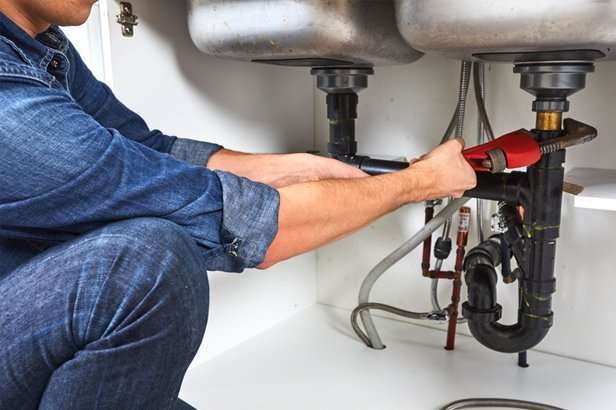Buying a pre-owned property can be a fantastic investment, but it comes with its own set of challenges. Ensuring that you’re not stuck with a “lemon” requires a thorough inspection to identify potential issues that could lead to costly repairs down the line. At Austenite Technical Services, we specialize in detailed property inspections to help buyers make informed decisions. Here are the top 10 snags to look out for when purchasing a pre-owned property.
1. Structural Issues
Cracks in Walls and Ceilings
Cracks can indicate serious structural problems. While hairline cracks might be harmless, larger cracks, especially those wider than 3mm, could signal foundation issues.
Uneven Floors
Uneven or sloping floors can be a sign of structural movement or damage. This issue often requires professional evaluation and repair.
2. Roof Problems
Missing or Damaged Tiles
Inspect the roof for missing, broken, or loose tiles, which can lead to water leaks and further damage.
Signs of Water Damage
Look for stains or damp patches on ceilings, which indicate water ingress from the roof.
3. Plumbing Defects

Leaky Faucets and Pipes
Check for drips and leaks around sinks, toilets, and under kitchen cabinets. Persistent leaks can cause water damage and mold growth.
Low Water Pressure
Test the water pressure in all taps and showers. Low pressure could indicate issues with the plumbing system or blockages.
4. Electrical Issues
Faulty Wiring
Outdated or damaged wiring can be a major fire hazard. Ensure all electrical systems are up to code and consider having a professional electrician inspect the wiring.
Non-functional Outlets
Test all electrical outlets and switches. Non-functional outlets might indicate underlying electrical problems.
5. HVAC System
Inefficient Heating and Cooling
Test the HVAC system to ensure it heats and cools effectively. Inefficiency can lead to high energy bills and discomfort.
Strange Noises
Listen for unusual noises when the HVAC system is running, as these can be signs of mechanical issues.
6. Damp and Mold
Damp Patches and Stains
Inspect walls, ceilings, and floors for damp patches and water stains. These are signs of water ingress and can lead to mold growth.
Musty Odor
A musty smell often indicates the presence of mold, even if you can’t see it. Mold can pose serious health risks and requires professional remediation.
7. Windows and Doors
Poor Seals and Drafts
Check that windows and doors close properly and have intact seals. Poor seals lead to drafts, increasing heating and cooling costs.
Condensation
Condensation inside double-glazed windows indicates failed seals, which can lead to heat loss and mold growth.
8. Insulation Problems
Insufficient Insulation
Poor insulation can lead to high energy bills. Check the attic, walls, and floors to ensure adequate insulation is in place.
Signs of Pests
Look for signs of pests, such as droppings or gnaw marks, which can damage insulation and other parts of the property.
9. Exterior Issues
Cracked or Peeling Paint
Examine the exterior paintwork for cracks or peeling, which can allow moisture to penetrate and cause damage to the underlying structure.
Gutters and Downspouts
Ensure gutters and downspouts are clean and properly attached. Blocked or damaged gutters can lead to water damage.
10. Flooring Concerns
Worn or Damaged Flooring
Check for signs of wear, damage, or lifting in carpets, tiles, and wooden floors. These issues can be expensive to repair or replace.
Subfloor Problems
Investigate any squeaks or soft spots, which could indicate issues with the subflooring.
FAQs
1. How can I identify structural issues in a pre-owned property?
Look for large cracks in walls and ceilings, uneven floors, and doors or windows that stick. Professional inspection is recommended for a thorough assessment.
2. What are the signs of roof problems?
Missing or damaged tiles, water stains on ceilings, and damp patches are common indicators of roof issues.
3. How do I check for plumbing defects?
Inspect for leaks around sinks and toilets, check under cabinets, and test water pressure in all faucets and showers.
4. What electrical issues should I look for?
Ensure all outlets and switches work, look for outdated or damaged wiring, and consider an electrician’s inspection for safety.
5. How do I evaluate the HVAC system?
Test the heating and cooling functions, listen for unusual noises, and check maintenance records if available.
6. What should I do if I find damp or mold?
Identify the source of moisture, address any leaks, and consider professional mold remediation if necessary.
7. How important are window and door seals?
Proper seals are crucial for energy efficiency and preventing drafts. Inspect seals and look for condensation between double-glazed panes.
8. How do I assess insulation quality?
Check attic, walls, and floors for adequate insulation. Look for signs of pests that might have damaged it.
9. What exterior issues should I be aware of?
Check for cracked or peeling paint and ensure gutters and downspouts are clean and functional.
10. How can I spot flooring problems?
Inspect for wear, damage, and lifting in flooring materials. Listen for squeaks or feel for soft spots indicating subfloor issues.
Conclusion
Purchasing a pre-owned property involves careful inspection to avoid unexpected repairs and expenses. At Austenite Technical Services, we provide comprehensive property inspections to help you identify and address these common snags. By being vigilant and informed, you can ensure that your investment is sound and that your new home is a haven of comfort and quality. Contact us today for expert inspection services and peace of mind in your property purchase.









